A half-fledged dream, or Starcraft tabletop concentrate

Good day to you, dear geeks and sympathizers! They say that a person knows himself only when he is deprived of his freedom ... My wife, children, my favorite work and the constantly increasing body circumference convinced me of the justice of this statement of the creators of Starcraft. The only thing that is capable of comforting the soul of an aging Terran in this situation is the opportunity to become the owner of an acoustic module from the basic planetary set of Jim Raynor himself.
In fact, I was bored with the squeaky sounds made by the corpus speaker of a working computer in the clinic, and I wanted something more. At least with some kind of bass, with an MP3 player (SD slot and USB socket are required), with radio and Bluetoooth. And the ability to charge all kinds of devices from USB. And he must also remind of the non-zero probability of the presence of alternative forms and types of intelligent life in the infinite cosmos.
A sober analysis of the space on the desktop showed that, at best, you need to rely on any one-piece overhang with dimensions not exceeding 20x30 cm. How to get this combination of the above functions and qualities from such a small device for inexpensive?
')
Cheaply is China. And the presence of bass frequencies is the corresponding acoustic design. Since it is the acoustics - the darkest of all the waters in the cloud, let's start with it. I have long wanted to try to sculpt any speakers with an acoustic labyrinth (in the foreign literature “transmission line”), but I always stopped the cost of such experiments. In this case, due to the small size of the costs promised to be insignificant.
To begin with, several variants of cheap dynamic heads were selected and purchased:

As it was easy to guess, the common parameter for these heads are dimensions (diameter of the diffuser is about 50 mm). Chinese comrades lead graphics with a lower resonant frequency of 60 Hertz ... Cute pranksters. Even famous manufacturers of heads can not achieve results below the honest 180 Hertz on such small GG. On the other hand, why not conduct a small experiment? The acoustic maze in the form of a quarter-wave resonator will be tuned to a frequency of 100 Hertz and will have a cross section of 110% of the area of the head diffuser. The channel length will be 60 cm. These parameters and determined the size and shape of the body. In the free DesignSpark Mechnical three-dimensional models were scaled:

The labyrinth is so tortuous in order to keep the length of its knees minimal and thereby prevent the occurrence of standing waves at low frequencies. It is assembled, consists of the main part and the bottom wall. I generally printed it in chunks in order to make rational use of time and filament:
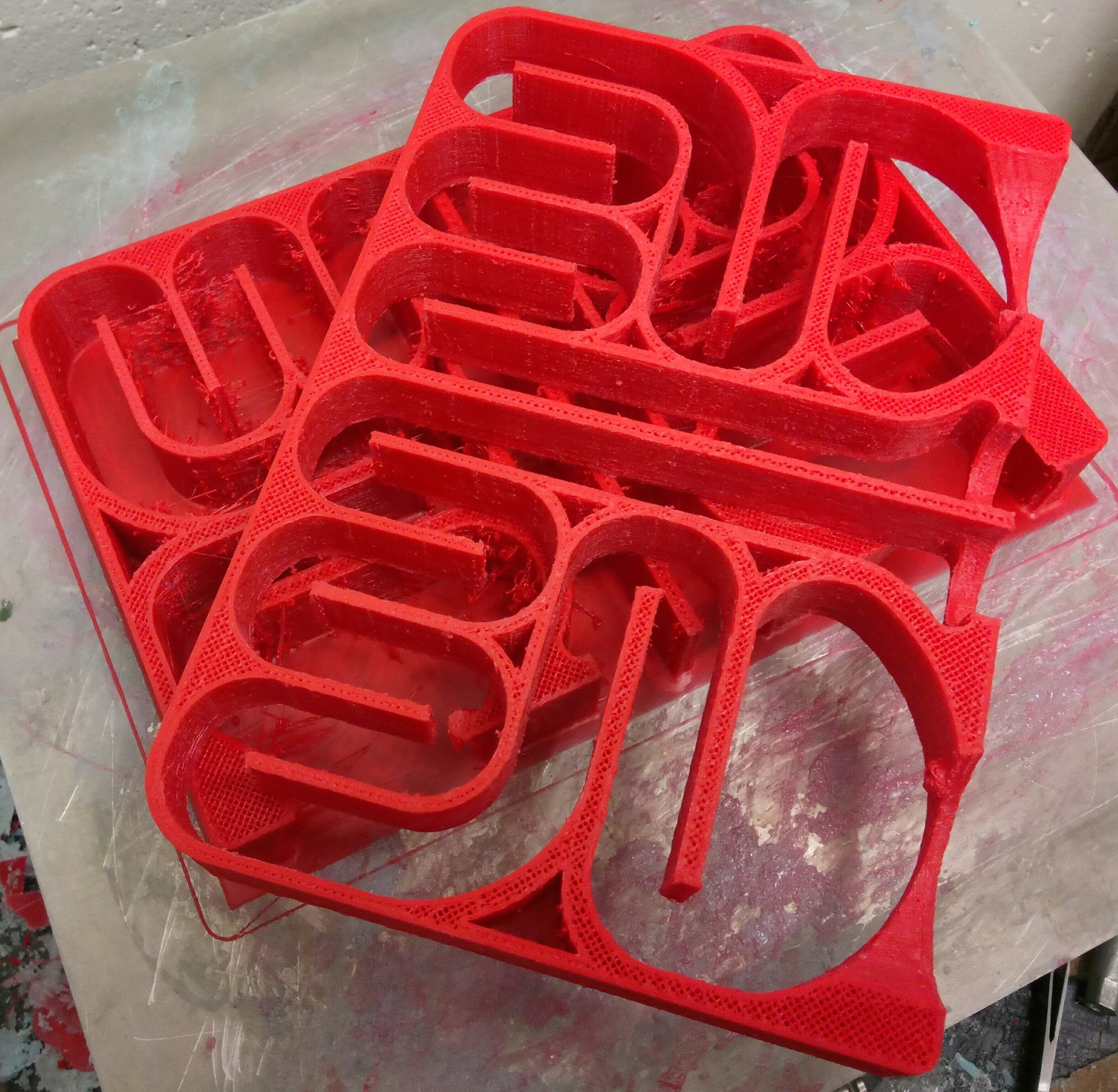
In principle, such a body can be printed on a 3D printer (whoever has it, of course) and in its entirety, but then it will not be possible to fill the labyrinth with a loose sound absorber (synthetic wool: just fill, not stuff). The bottom wall must be firmly glued, paying particular attention to the inner walls of the maze. Pre-labyrinth camera can be stuffed with cotton more tightly, to prevent resonances at medium and high frequencies. It is important not to block the exit to the maze.
Now let's do the electronics. Bluetooth module with support for playback from microSD cards and USB storages, with line-in, radio, simple display and remote control costs 6 euro:
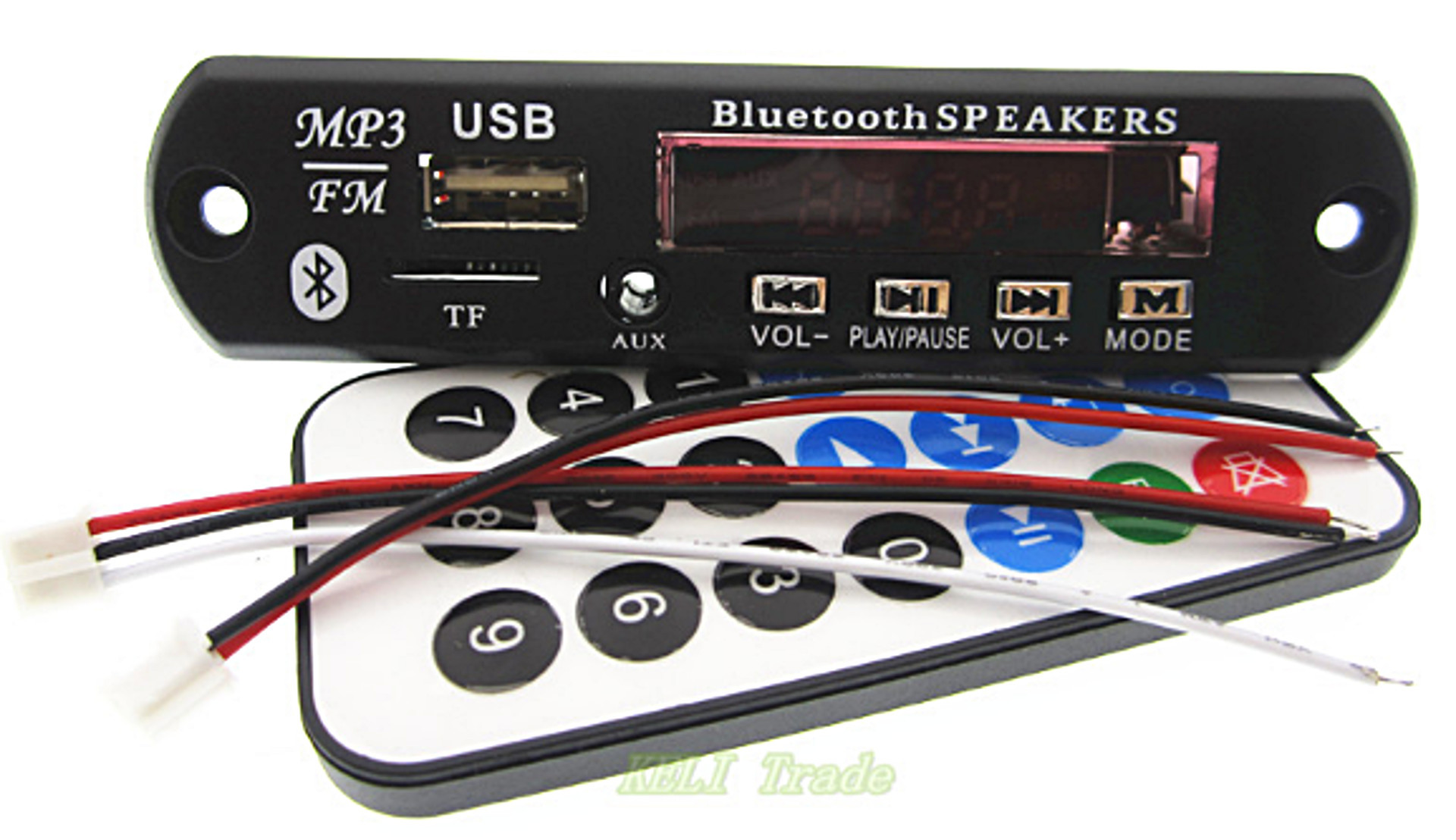
It is necessary to make a reservation: all similar Chinese modules have a cheap Bluetooth receiver, you can even ignore the luxury type APT-X. On the other hand, no one bothers to buy a scarf with a CRS8645 chip and replace it with a regular receiver. You just have to solve a little problem with a differential audio output.
Power amplifier AF. Recently, the dominance of the so-called Class D amplifiers has been observed. Miniature scarves on the PAM8610 give out 2x10 watts and work even without a radiator, well, what is not fun? But it’s not a joy that the sound of these amplifiers is a complete slag, in my opinion. Since it makes sense to save the last cents and milliWatts in this case is missing more than completely, we take a ready-made board on an “honest” Class AB TDA7266 amplifier:
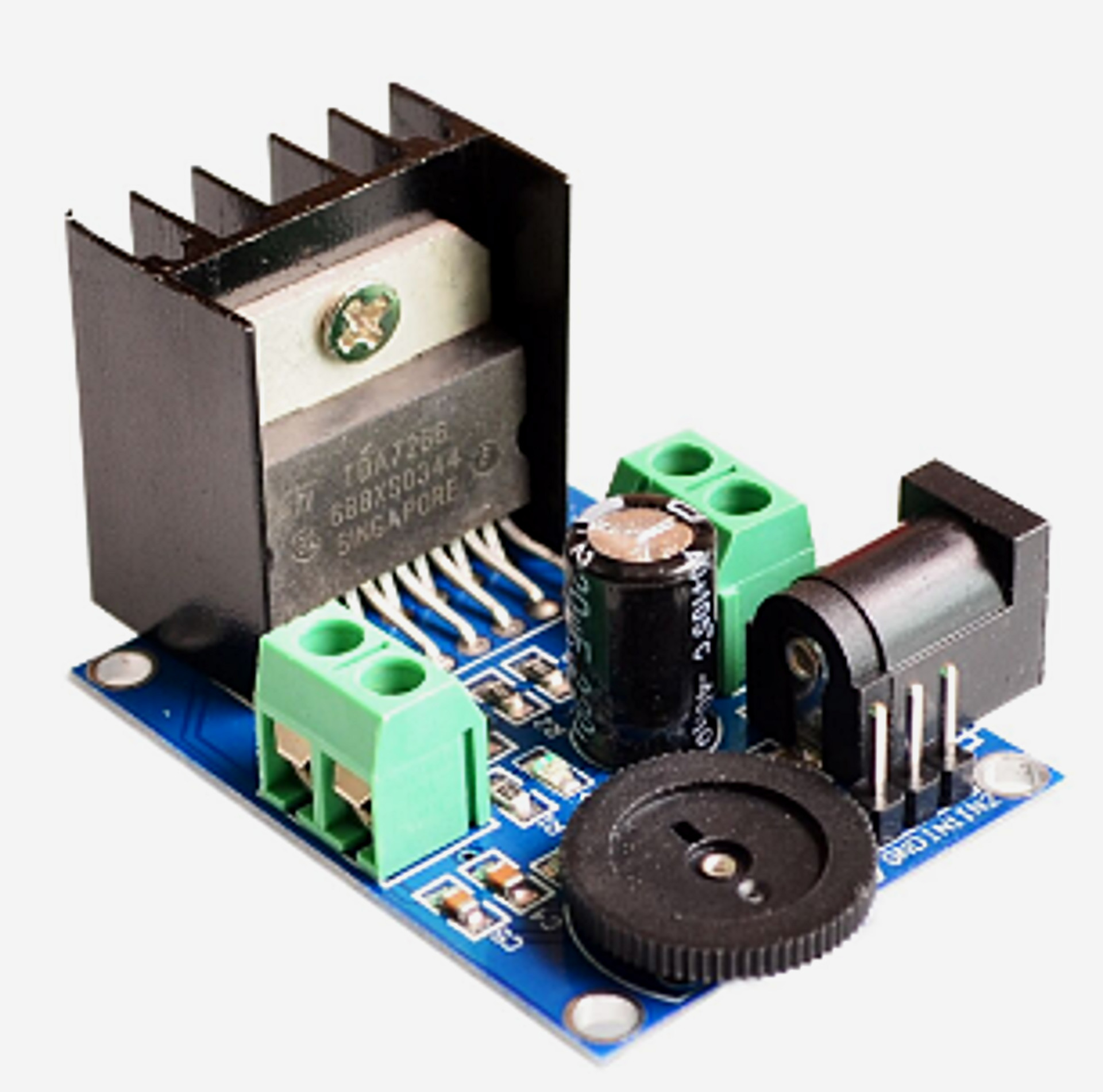
It is small in size, works with unipolar power and has an acceptable sound quality. Be sure to check the presence of thermally conductive paste under the microcircuit: it is probably not there.
USB charging module board. Works from 12 volts, has two USB sockets:
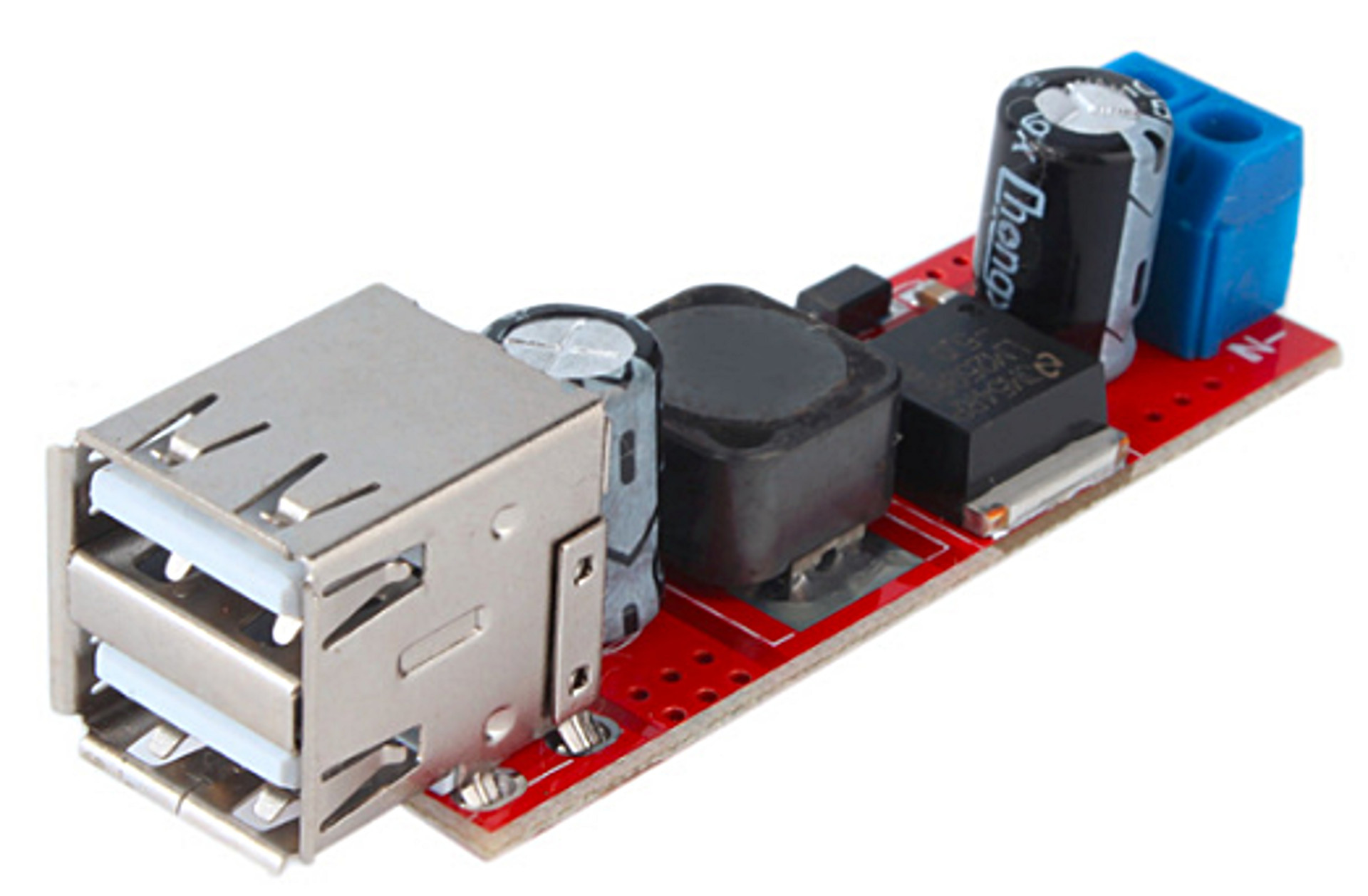
Cards indicating the signal level. Not too necessary thing. In addition, everything is ambiguous: While listening to music at a low volume (for example, while working with papers or on a computer), the blinking indicators distract and annoy, but at high volume the pleasure from music can be enhanced by fun jumping columns of light.
Of course, you can install any switch, but this is not our way. Our way is to choose a display board with a small dynamic range and adjust it so that the display starts when the volume is above average. Since the device's body was decided to stand in blue, the standard LEDs were replaced with blue ones installed with a 90 ° rotation. This is still a pleasure, the legs have to be mercilessly and terribly bend:

The entire device is powered by a simple 12 volt power supply. Our Chinese friends claim that he is able to provide up to two amps of current. In fact, the voltage starts to drop already at a current of 1.2 Amperes, which does not interfere with this device.
For what I love my 3D printer: it does all the work for which my hands are not sharpened:
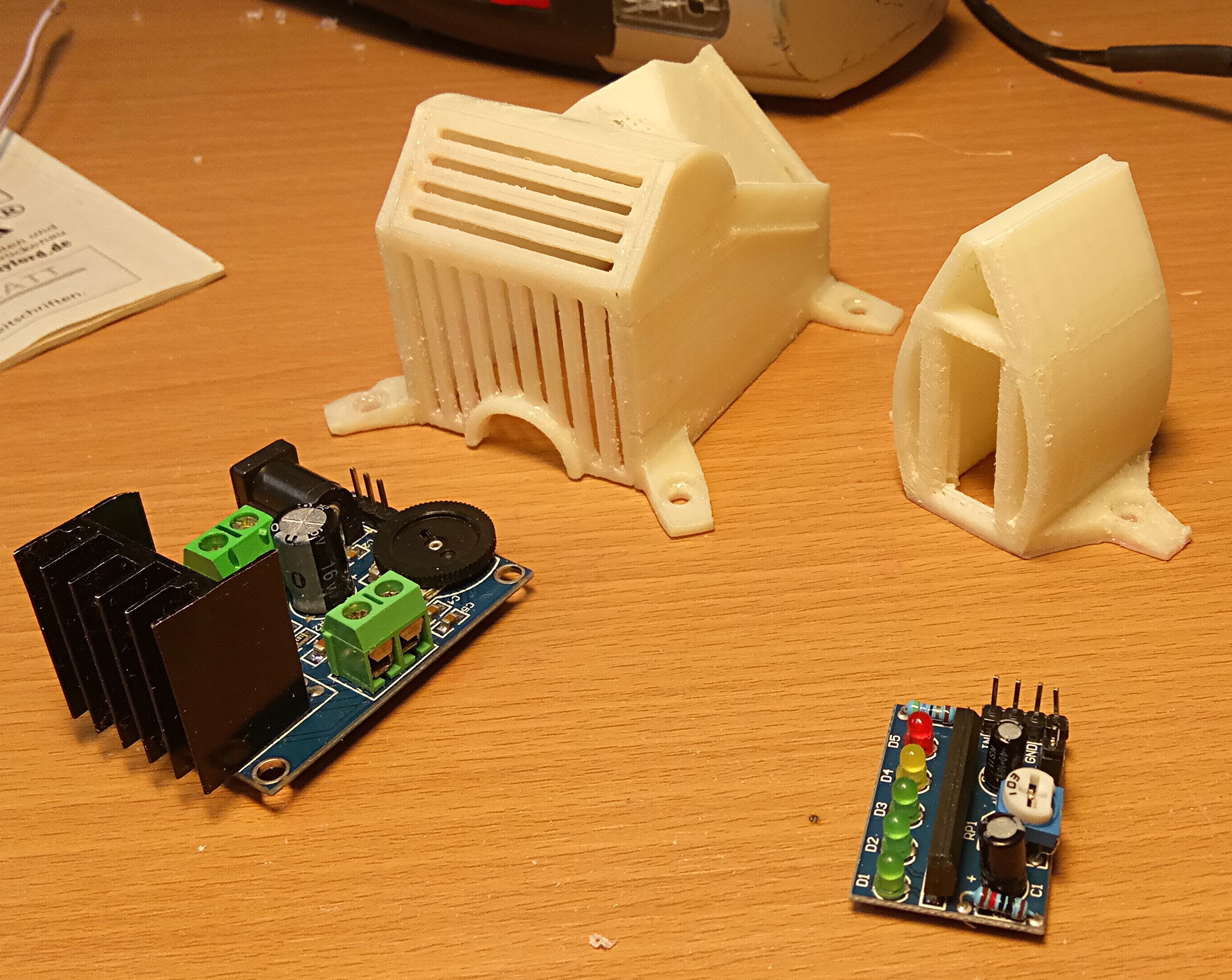
Painting on a professional stand:
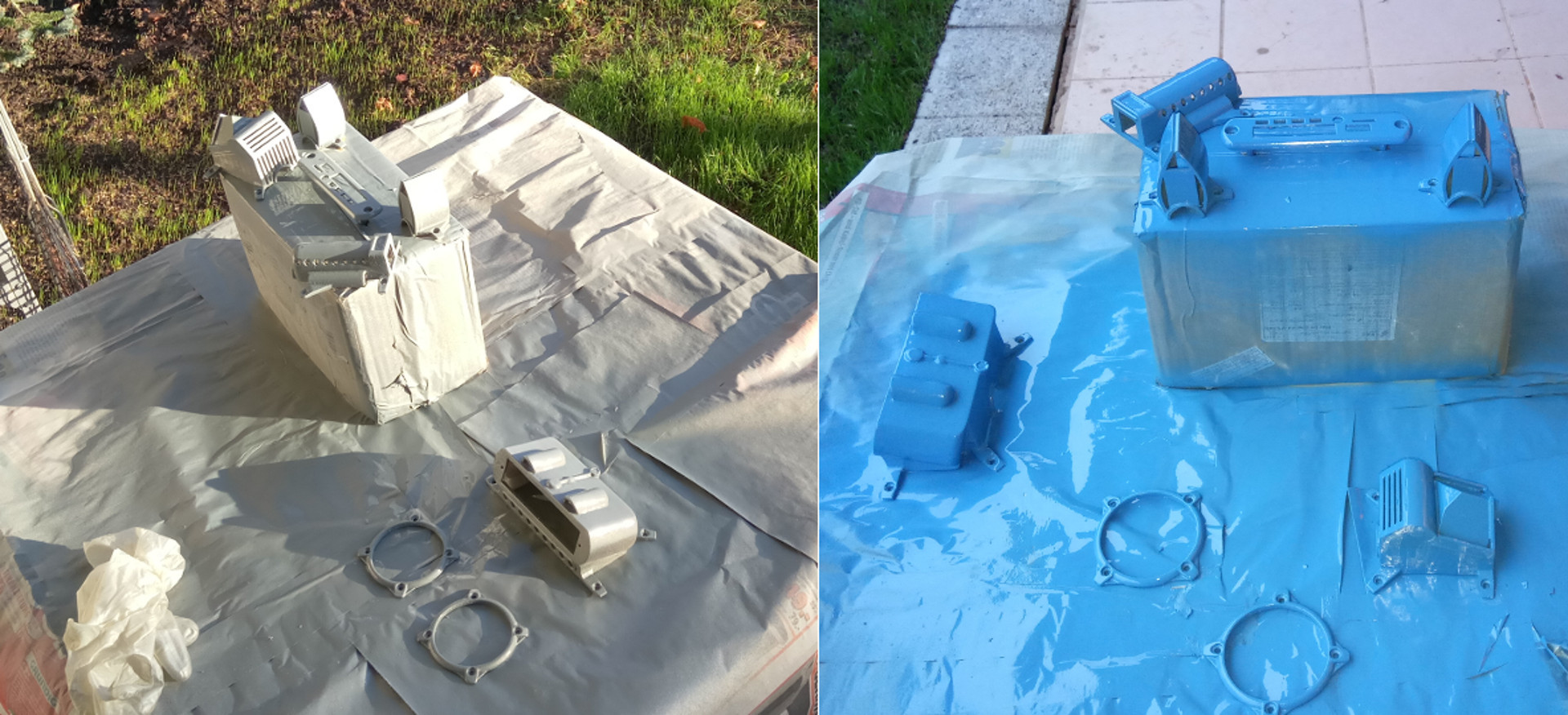
Drying on a professional dryer:
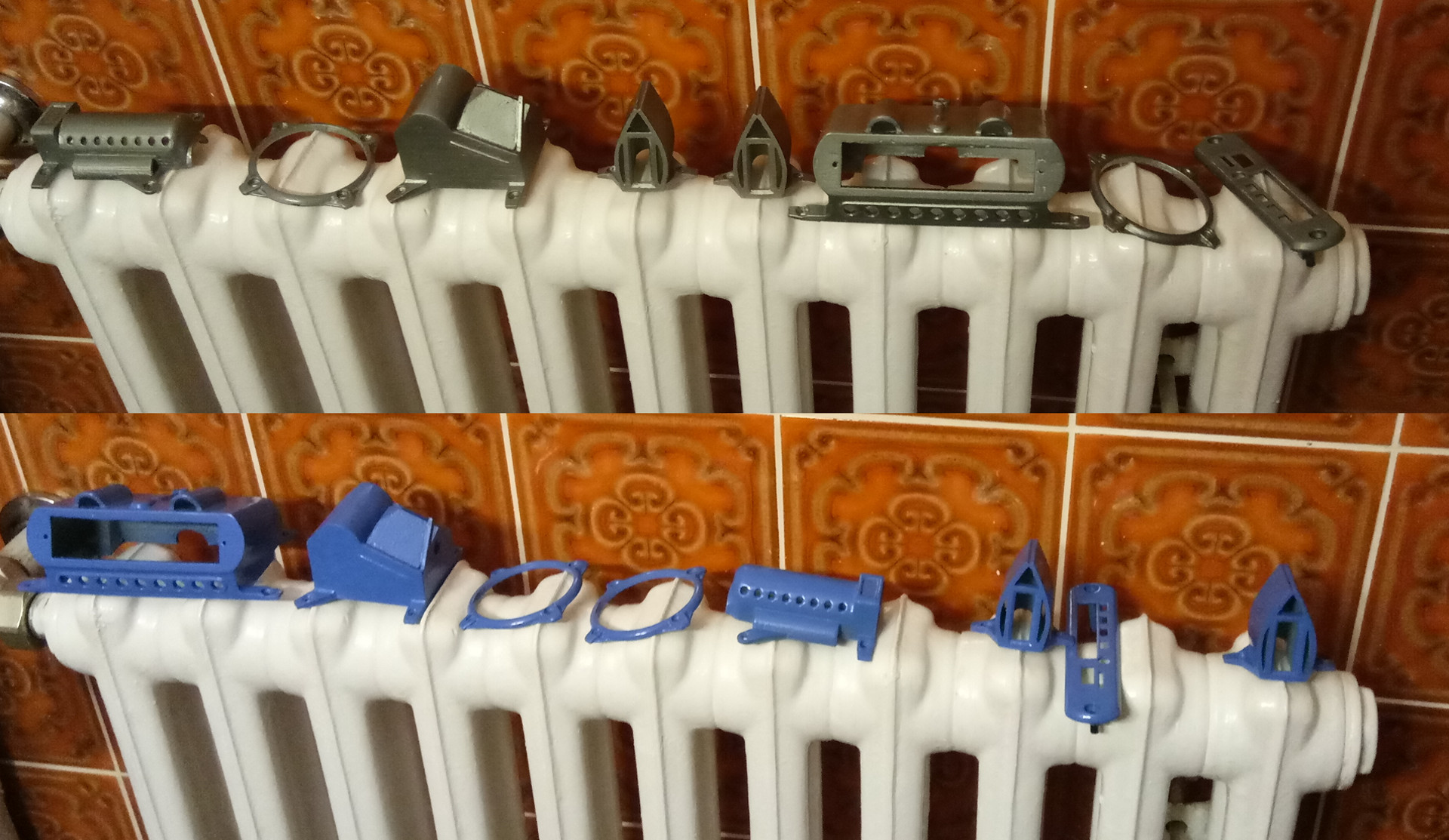
As in the case of my previous project, self-made speakers, four-layer painting: primer-spray, then paint with the effect of stainless steel, then transparent varnish, then sky blue paint (the main color of Taikus' spacesuit at the beginning of the film). All layers must be carefully dried. All housings must be painted separately so that they do not stick to the main body of the device. The front panel of the Bluetooth module must be unscrewed and painted the same way as the cases of the other modules.
Upon completion of the drying, it is necessary to estimate whether all the calculations are correct, whether all covers on the case fit, etc.
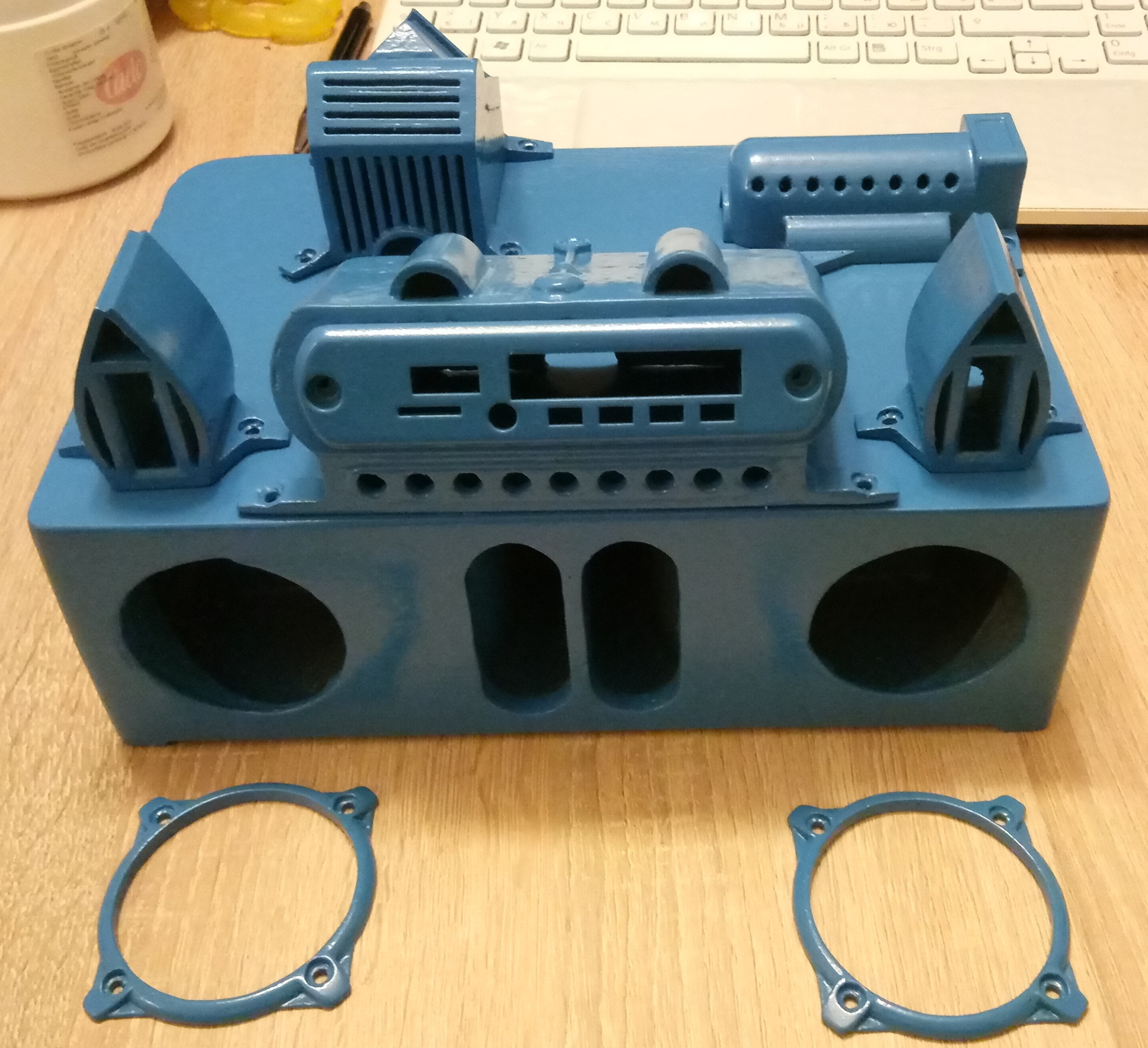
Now it remains to erase the blue paint from the edges, curves and protruding parts with a napkin soaked in acetone, and the incomprehensible blue figovin is transformed into a solid steel device, worn in battles and travels.
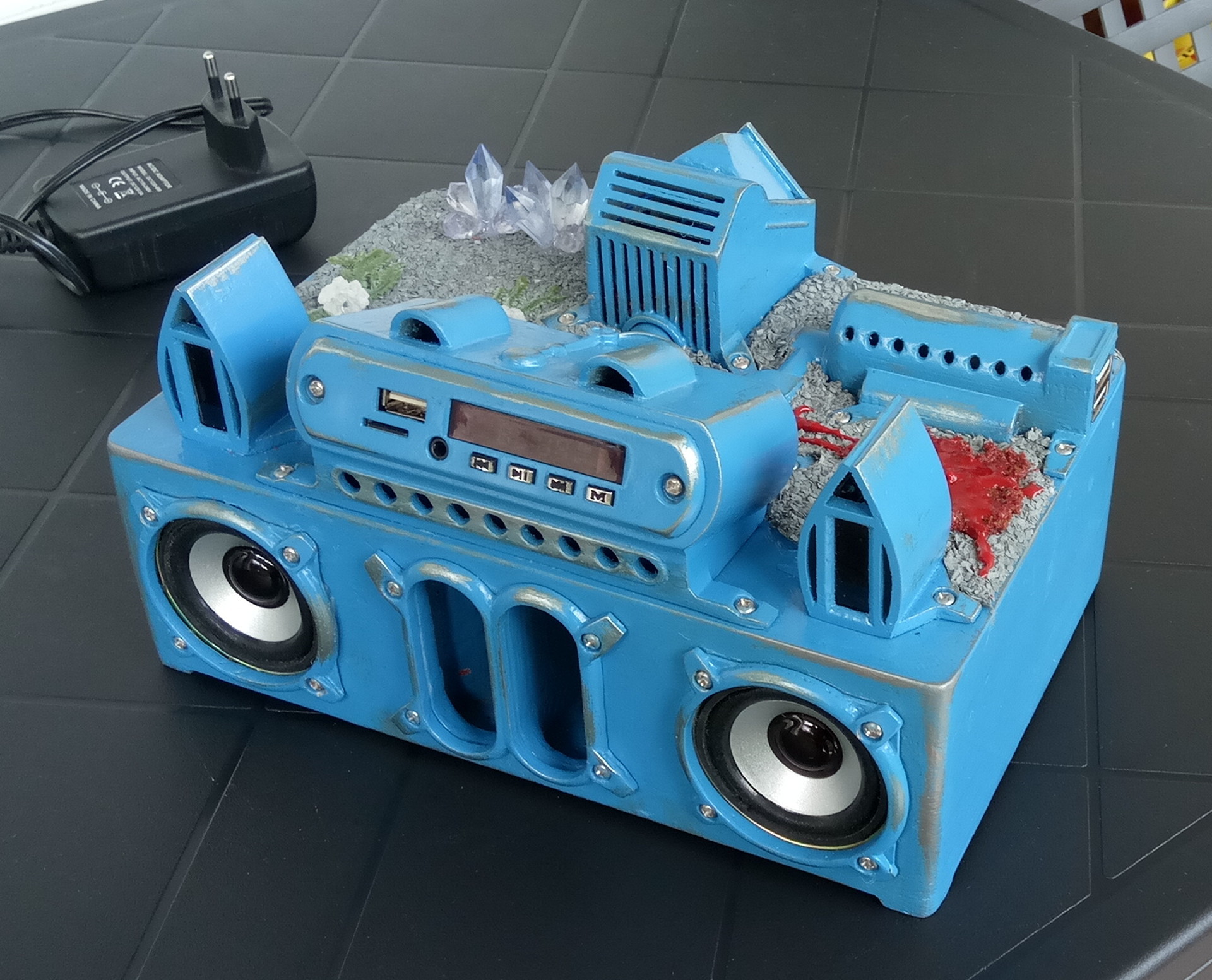
The scenery of the top of the main body: medium-sized stone chips to simulate the surface of the planet, acrylic crystals as minerals (they are never enough!), Lithotropic plants are made of artificial moss sprigs and natural rock crystal (why - it’s not clear!).
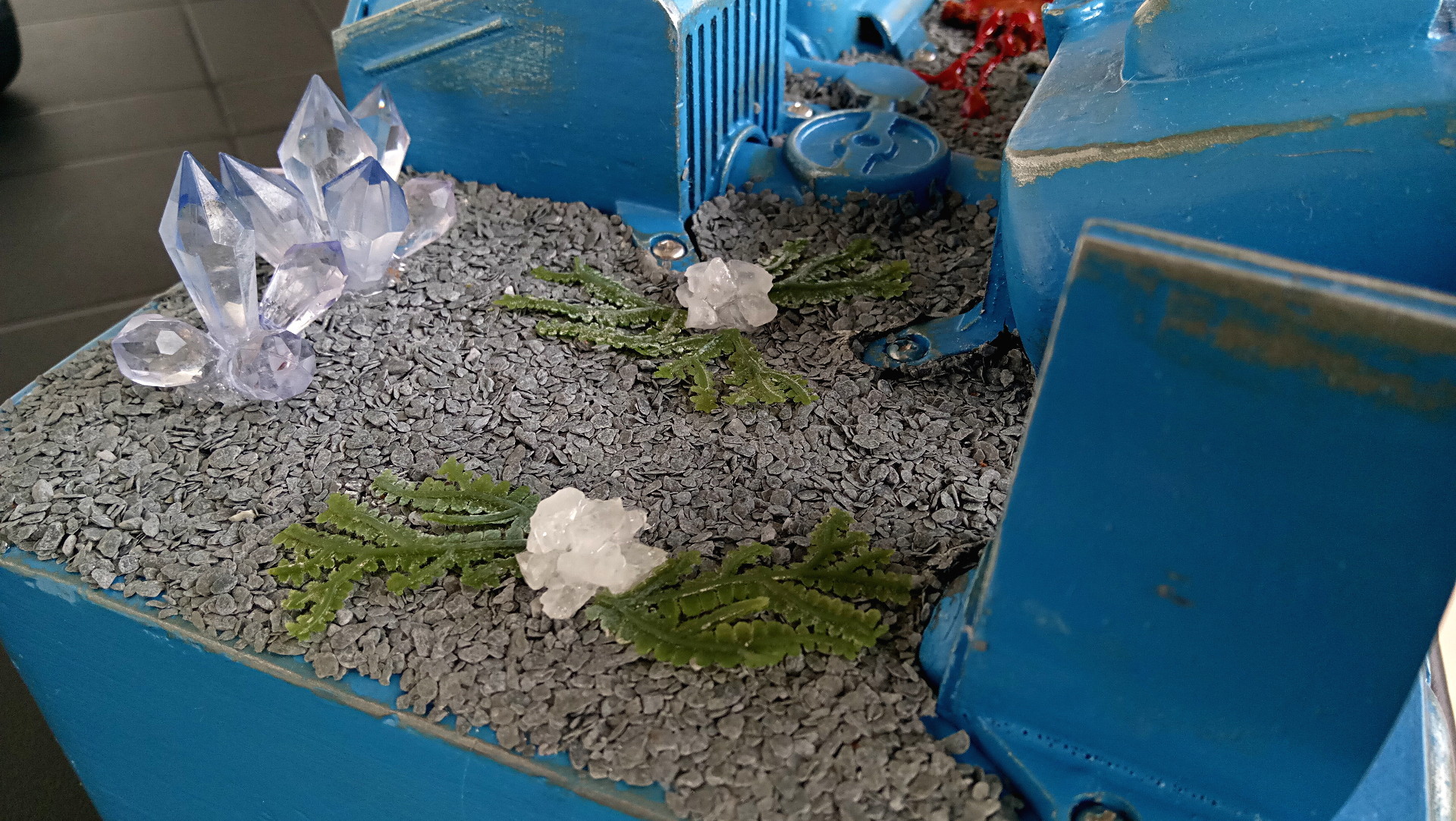
All interconnects are covered with armored channels to protect against the contamination of zerg:

The torn, dying spawn of zerg is made of epoxy, fine foam rubber
and red pigment.
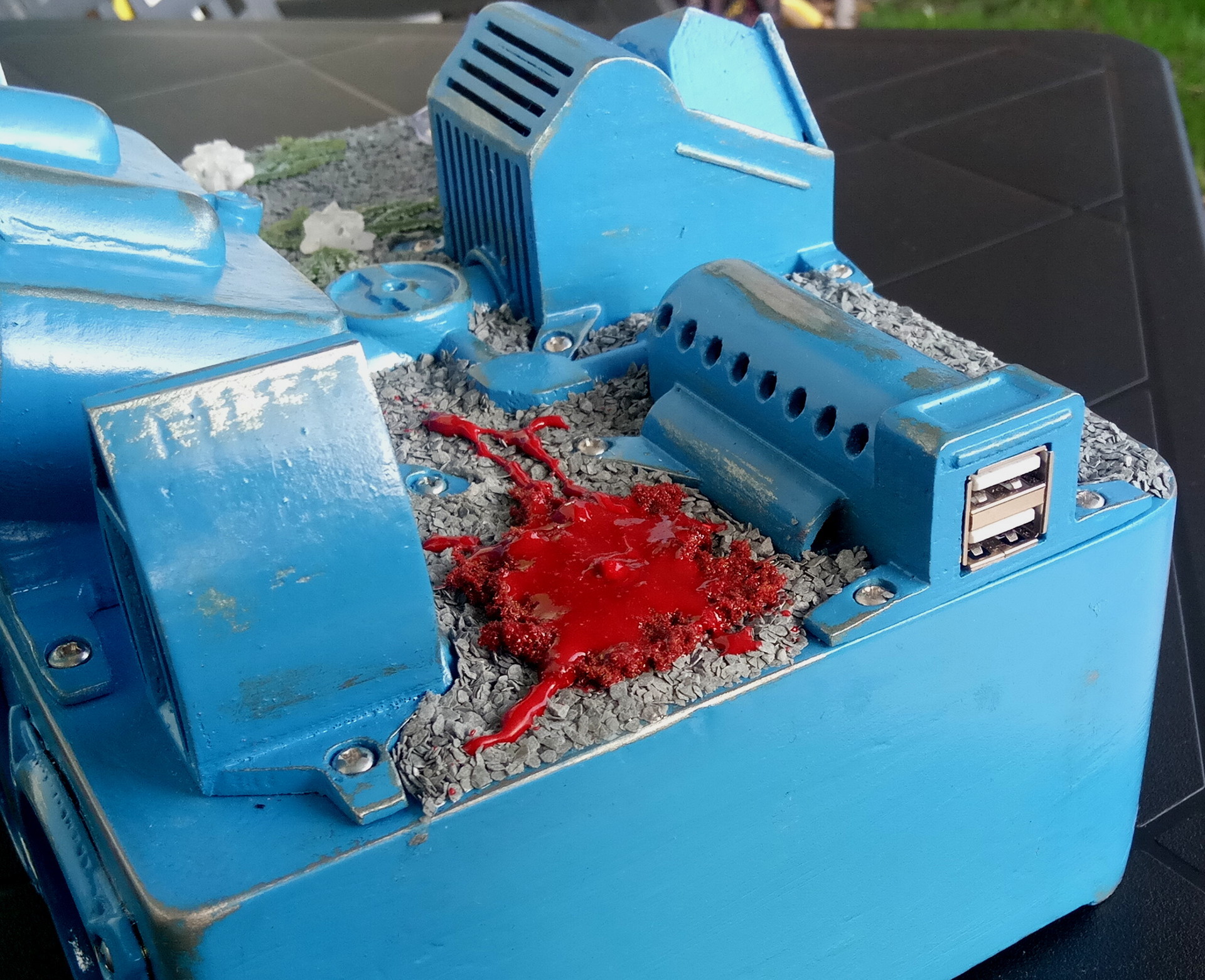
Now about the sound: this acoustic design requires some effort to adjust it. Here all the parameters are important: the degree of filling and the material of the absorber, the model of the loudspeaker head, the distance to the table (the level and nature of the bass varies depending on the distance to the surface). In general, the sound is acceptable, without unpleasant overtones. All modules are stable.
That is, when changing the head model, it is necessary to try different degrees of pre-labyrinth camera stuffing and distance from the table surface.
At the combat position in the clinic:

If anyone needs, here are the files of three-dimensional models.
Published under the WTFPL license.
Well, and traditional: Have fun!
Source: https://habr.com/ru/post/372939/
All Articles